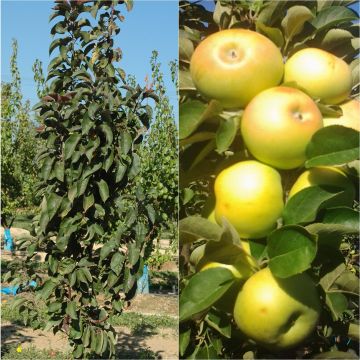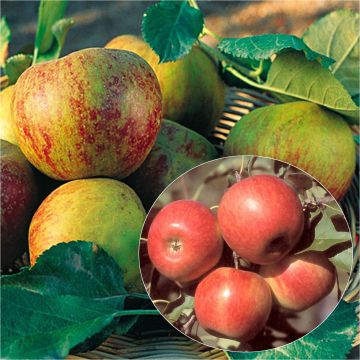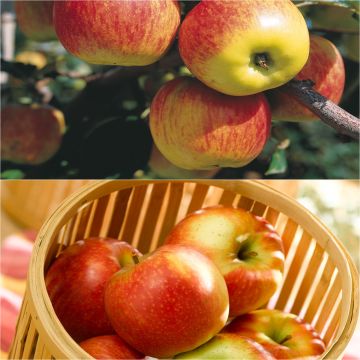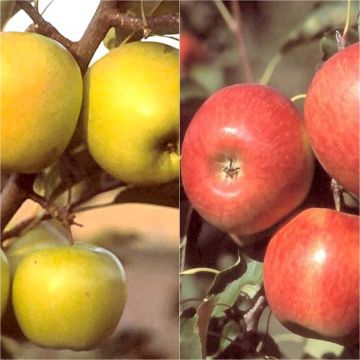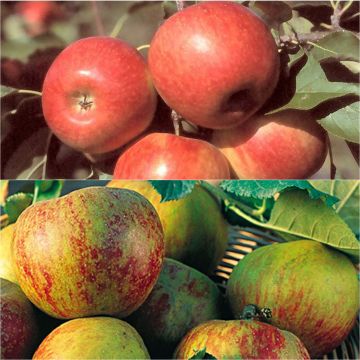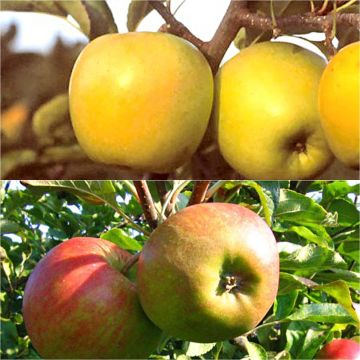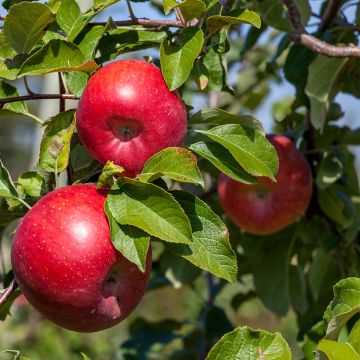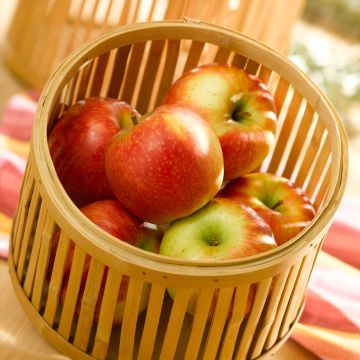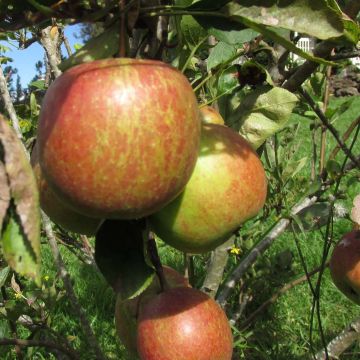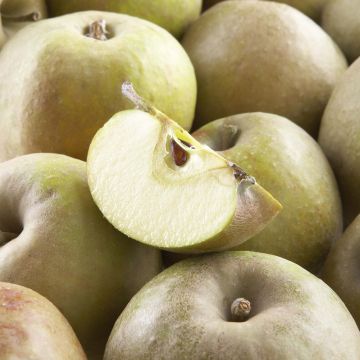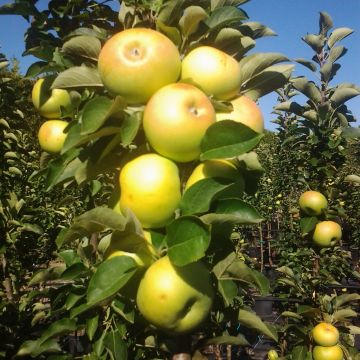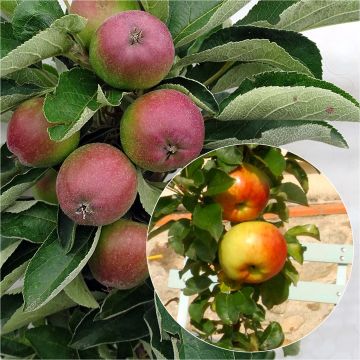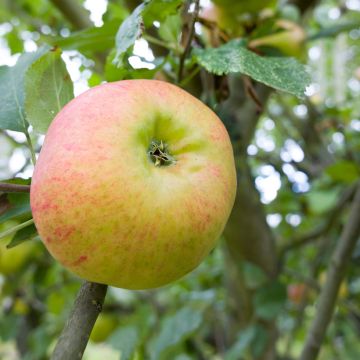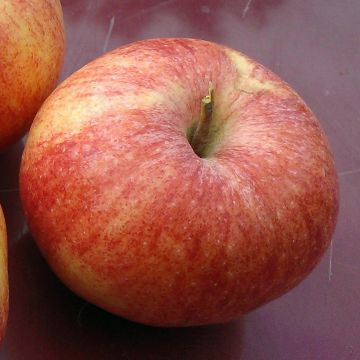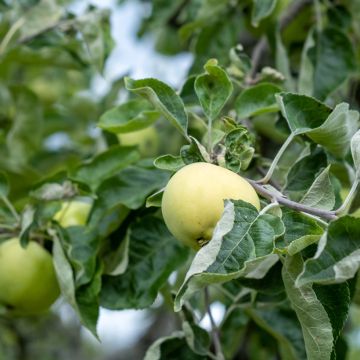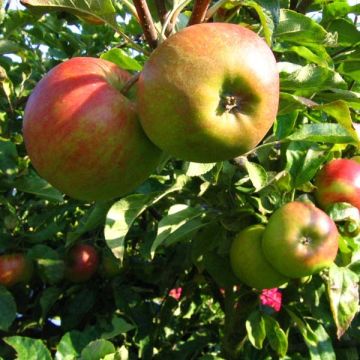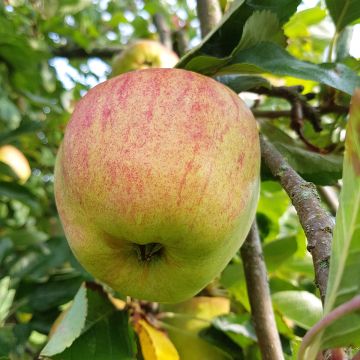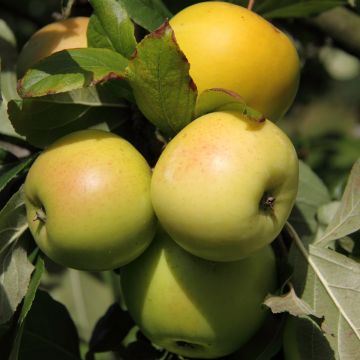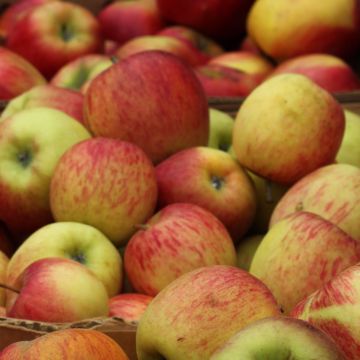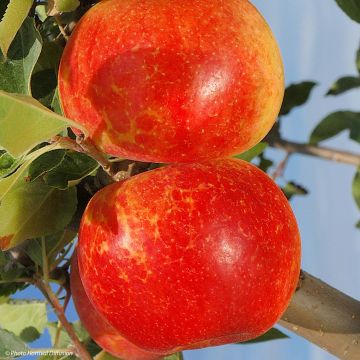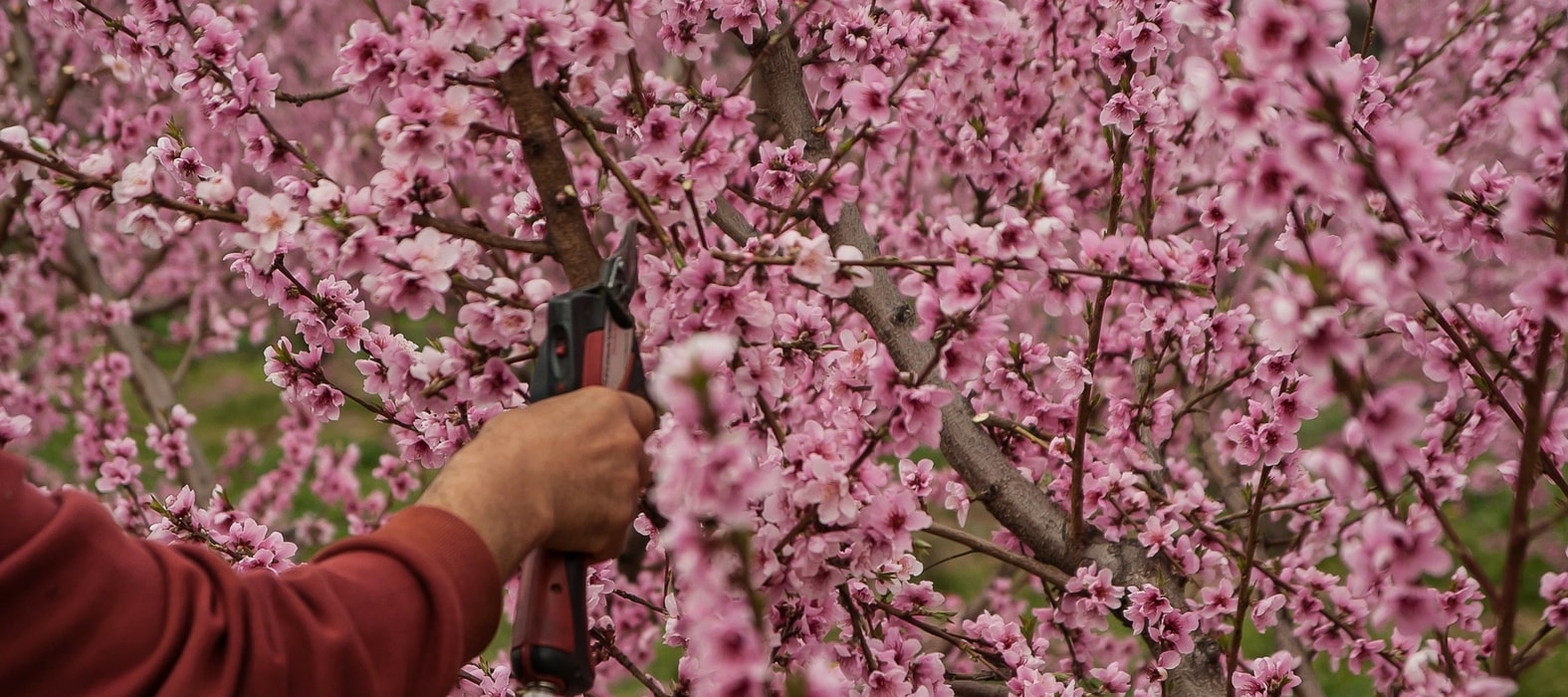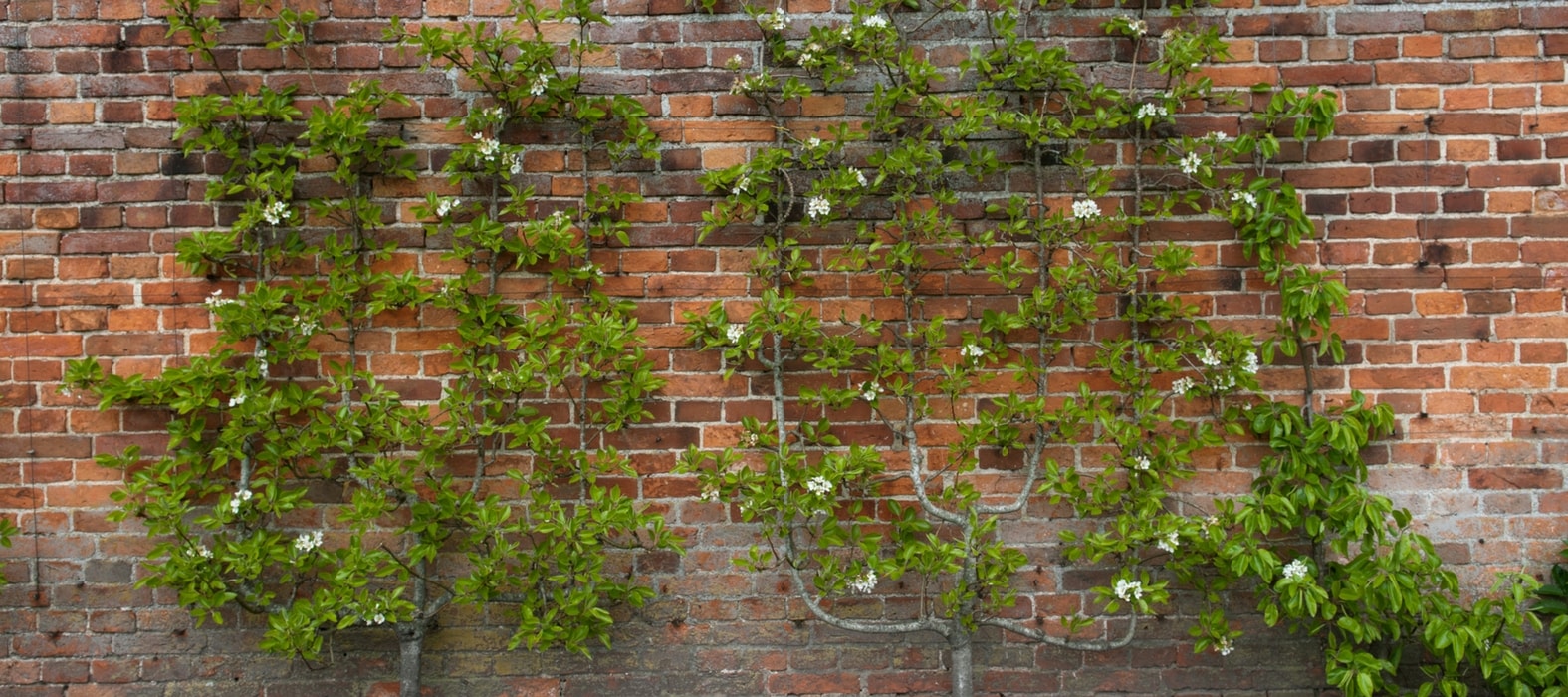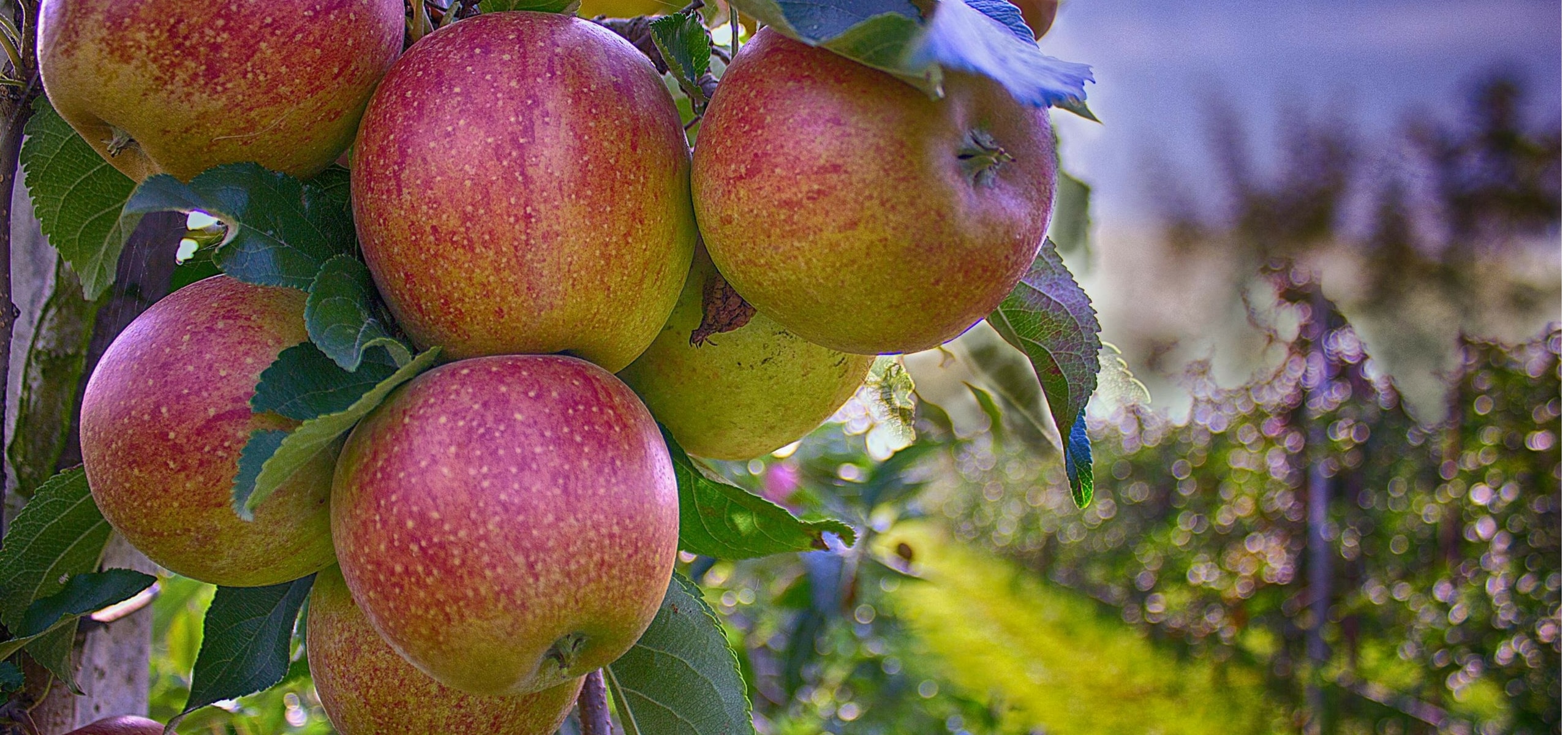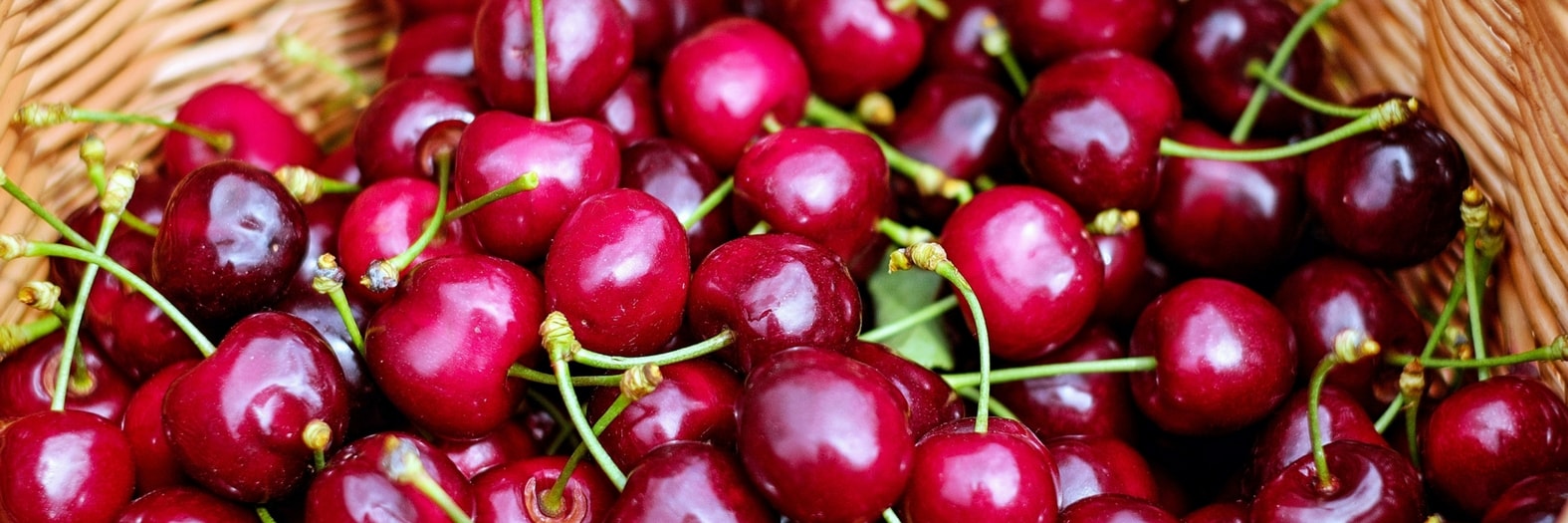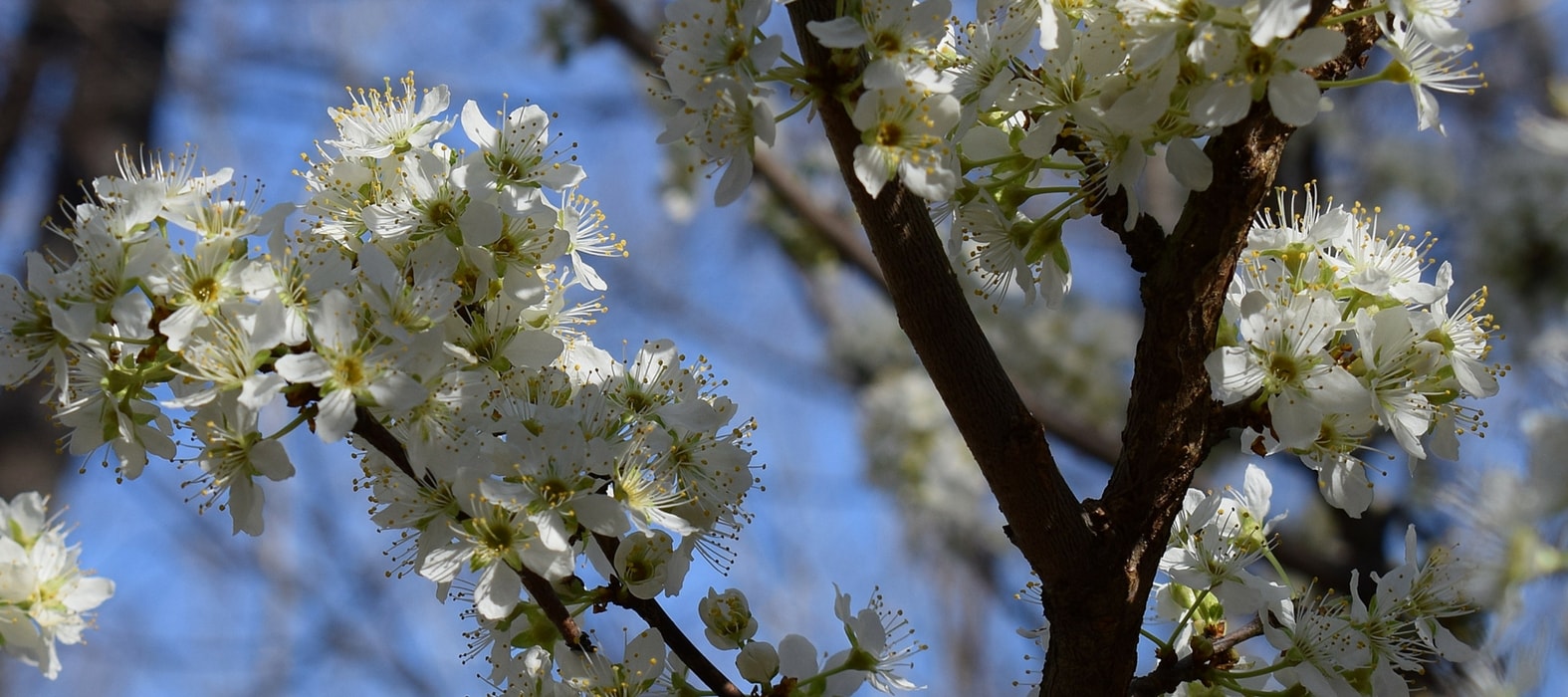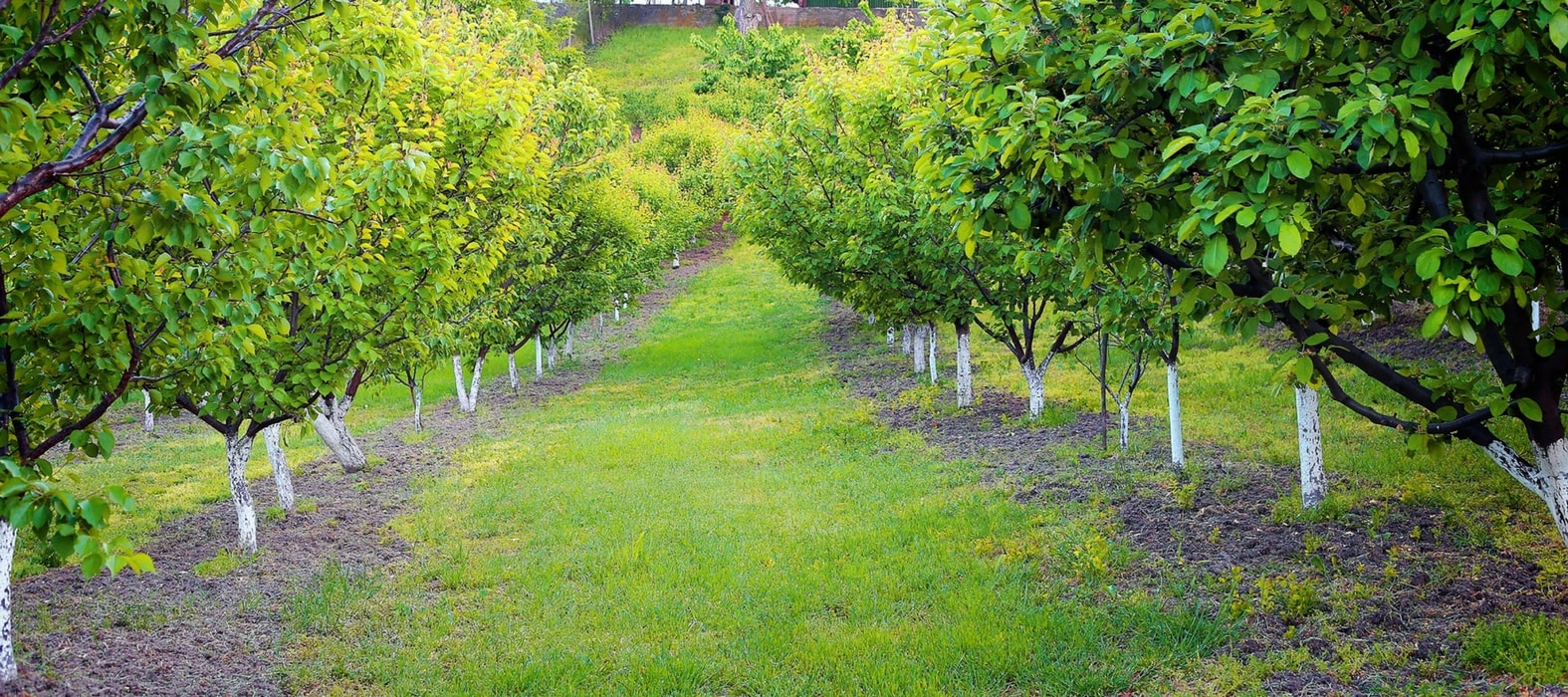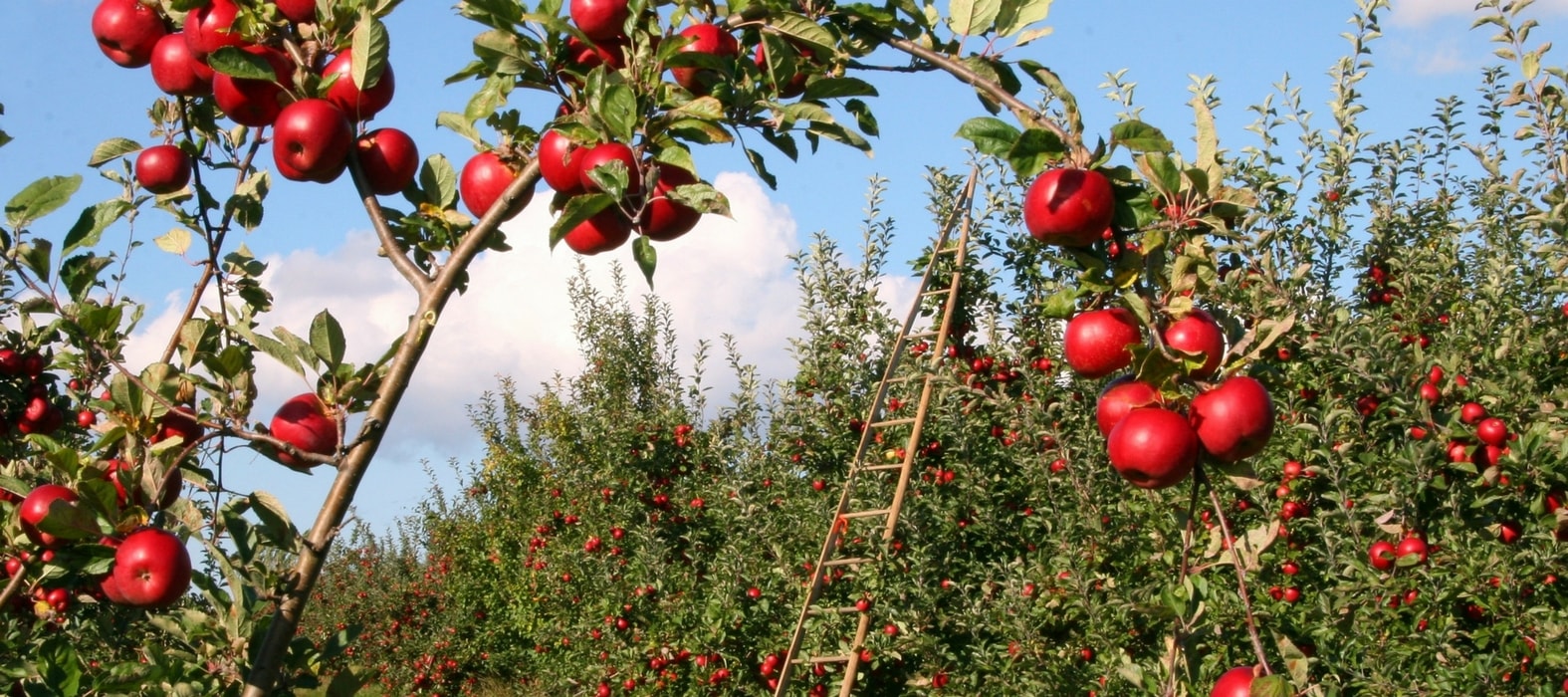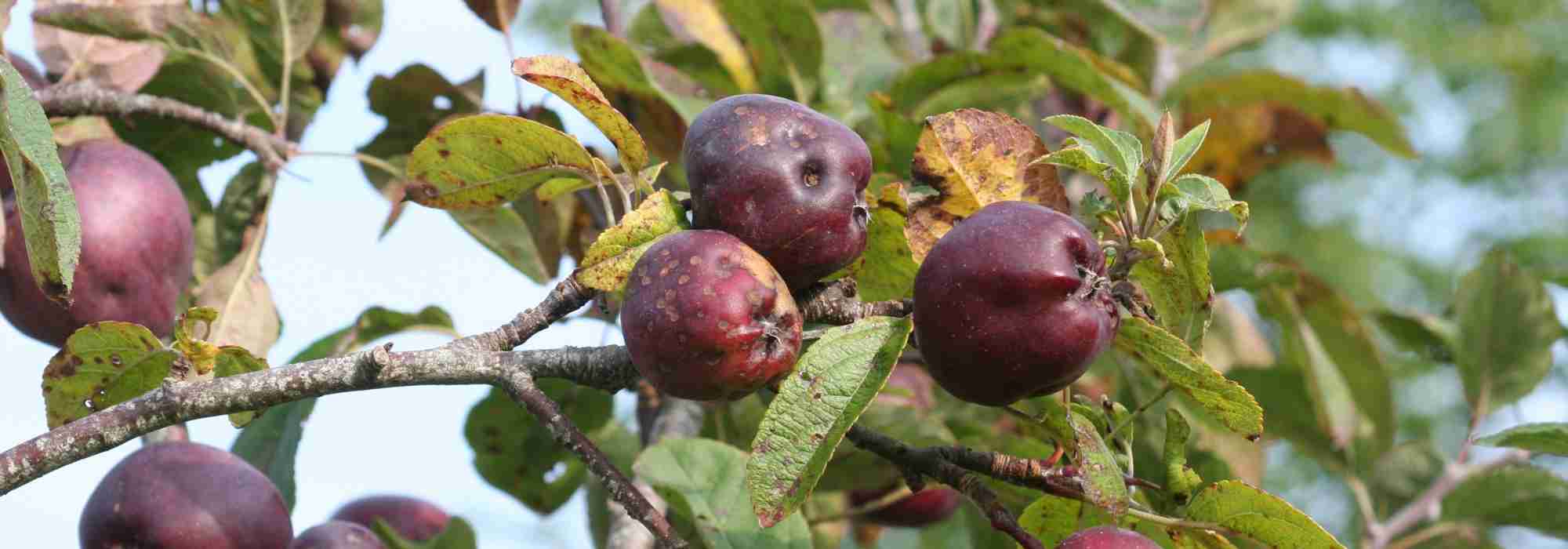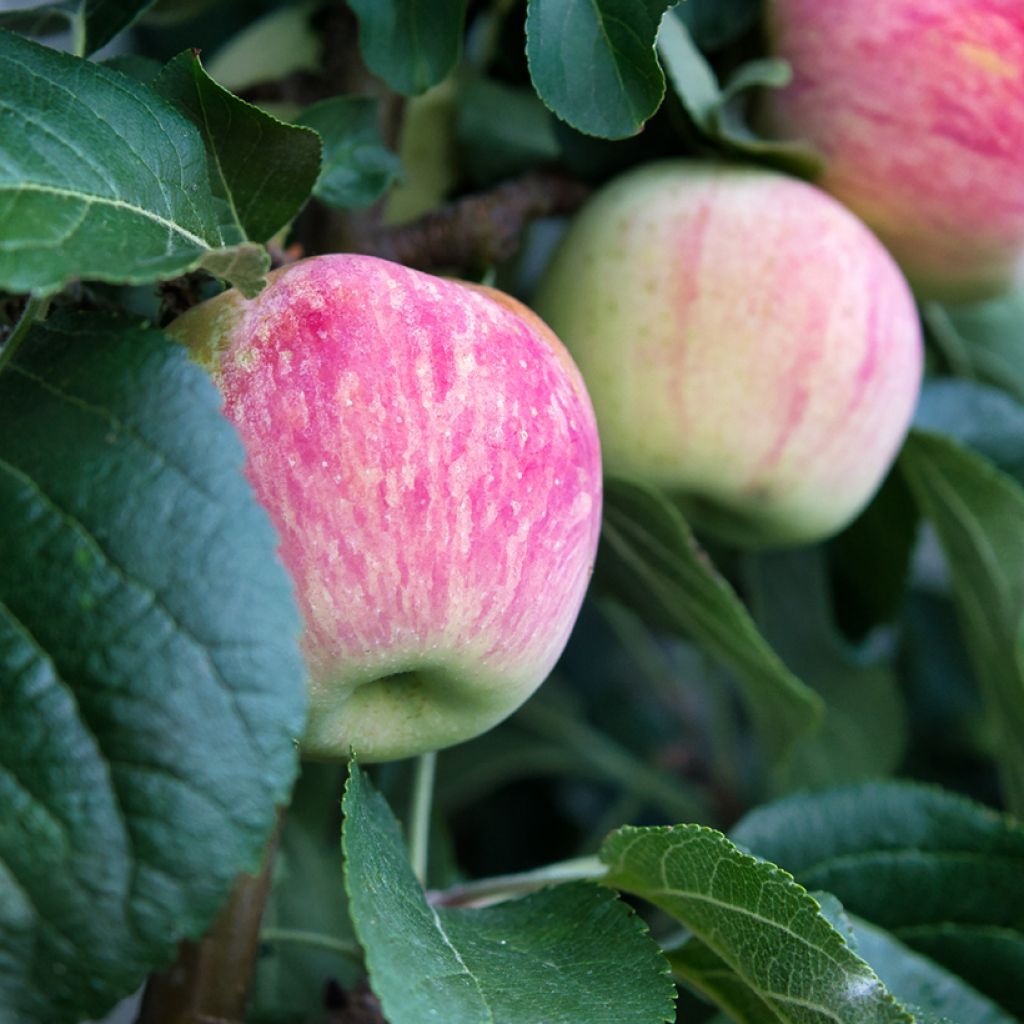

Apple Tree Suislepper - Malus domestica
Apple Tree Suislepper - Malus domestica
Malus domestica Suislepper
Apple
Special offer!
Receive a €20 voucher for any order over €90 (excluding delivery costs, credit notes, and plastic-free options)!
1- Add your favorite plants to your cart.
2- Once you have reached €90, confirm your order (you can even choose the delivery date!).
3- As soon as your order is shipped, you will receive an email containing your voucher code, valid for 3 months (90 days).
Your voucher is unique and can only be used once, for any order with a minimum value of €20, excluding delivery costs.
Can be combined with other current offers, non-divisible and non-refundable.
Why not try an alternative variety in stock?
View all →This plant carries a 6 months recovery warranty
More information
We guarantee the quality of our plants for a full growing cycle, and will replace at our expense any plant that fails to recover under normal climatic and planting conditions.
Description
The 'Suislepper' Apple Tree is an old variety of Estonian origin, likely dating back to the 18th century. It is a summer variety that fruits from late August or September. Its apples are medium-sized, yellow with orange or red stripes. The flesh is light, tender, and juicy. It has a tangy, aromatic, fresh flavour with hints of raspberry. This is a high-quality dessert apple. Although vigorous, the tree is relatively susceptible to scab and fruit rot. The apples store well for summer varieties under good storage conditions. Self-sterile, this apple tree requires the presence of other apple varieties to improve pollination.
The Malus domestica 'Suislepper' is an old variety originating from the Russian Baltic provinces. This apple tree has a spreading habit, reaching approximately 4 to 5 m in height and 3 to 4 m in spread at maturity. Its foliage consists of large, ovate, deeply dentate, brownish-green leaves on top and greenish-white underneath. This is a self-sterile variety, which is why the presence of other apple trees flowering at the same time is necessary. In the absence of any information about its flowering period, choose super pollinators. The Reine des Reinettes and Cox's Orange Pippin varieties are suitable for cross-pollination. Ornamental crabapples such as Malus Perpetu Evereste and John Downie flower abundantly and can be excellent pollinators.
The 'Suislepper' Apple Tree is a variety producing an average yield. The fruit ripens between late August and mid-September. The apples should ideally be eaten raw. The fruits can be stored for part of the winter. Storage can be done in a cool, dry place, away from light at a temperature of around 8 to 10°C or in an airtight cold room at 1 to 3°C. Apples release ethene, a gas that promotes fruit ripening. To speed up the ripening of other fruits or vegetables, place apples nearby.
Also scientifically known as Malus communis or Malus pumila, the Malus domestica is commonly called the common or domestic apple tree. It belongs to the Rosaceae family. Present in France and Europe since antiquity, it is a fruit tree native to the forests of Central Asia. Its hardiness is excellent, making it the most widely cultivated fruit tree in Northern Europe. There are around 20,000 varieties, with approximately 10,000 of American origin, 2,000 of English origin, and 2,000 of Chinese origin.
Very popular for its fruit, the apple tree has a special place in gardens, delighting young and old alike. Among a wide range of apple trees, it’s easy to find the variety that best suits your preferences.
Plant habit
Fruit
Flowering
Foliage
Botanical data
Malus
domestica
Suislepper
Rosaceae
Apple
Cultivar or hybrid
Other Apple trees
View all →Planting and care
Choose a sunny spot for your Suislepper Apple Tree , the soil can be slightly chalky or acidic, but not excessively. Dig a wide planting hole at least 3 times the size of the root ball. Simultaneously add organic matter (compost, manure...) and a base fertiliser such as ground horn. Do not bury the graft junction. Stake if necessary. For apple trees planted in isolation and exposed to wind, it may be beneficial to stake them by setting up a guy-wire system: plant 3 stakes in a triangle 50 cm around the trunk, join them with pieces of wood. Protect the bark with a piece of rubber for example and attach the stakes to the trunk with metal wires. Water generously, even in winter, even if it rains. Fruit trees are ideally planted between October and March, outside of frost periods. Container-grown plants can be planted all year round except during periods of extreme heat or frost.
In winter, you can add a small spadeful of wood ash rich in potash at the base of the tree and lightly incorporate this into the surface of the soil, to improve fruiting. The Apple Tree can be susceptible to various diseases and pests. To minimise risks, space trees sufficiently, plant mixed-species hedges, place nesting boxes or insect shelters to attract beneficial wildlife. In short: prioritise diversity. The main diseases affecting Apple Trees are scab (brown spots on the leaves), brown rot (withering of flowers and fruit rot on the tree) and powdery mildew (white felting on the leaves). For these three cases, preventive action is preferable by spraying a horsetail decoction; as a last resort and in cases of severe infestation, a curative treatment with a Bordeaux mixture can be applied. As for pests, the codling moth (or fruit worm), a small caterpillar from a butterfly's eggs, burrows into the fruit. To remedy this, it is best to act preventively by encouraging the presence of tits and bats by setting up nesting boxes. In the event of an aphid infestation, spray a solution based on tar soap.
During the harvest in September-October, only keep picked fruits. For optimal storage, it is advisable to place the apples with their stalks facing downwards, in crates or trays. Choose a location that is preferably completely dark, dry, and cool, but frost-free.
Planting period
Intended location
Care
Planting & care advice
This item has not been reviewed yet - be the first to leave a review about it.
Haven't found what you were looking for?
Hardiness is the lowest winter temperature a plant can endure without suffering serious damage or even dying. However, hardiness is affected by location (a sheltered area, such as a patio), protection (winter cover) and soil type (hardiness is improved by well-drained soil).

Photo Sharing Terms & Conditions
In order to encourage gardeners to interact and share their experiences, Promesse de fleurs offers various media enabling content to be uploaded onto its Site - in particular via the ‘Photo sharing’ module.
The User agrees to refrain from:
- Posting any content that is illegal, prejudicial, insulting, racist, inciteful to hatred, revisionist, contrary to public decency, that infringes on privacy or on the privacy rights of third parties, in particular the publicity rights of persons and goods, intellectual property rights, or the right to privacy.
- Submitting content on behalf of a third party;
- Impersonate the identity of a third party and/or publish any personal information about a third party;
In general, the User undertakes to refrain from any unethical behaviour.
All Content (in particular text, comments, files, images, photos, videos, creative works, etc.), which may be subject to property or intellectual property rights, image or other private rights, shall remain the property of the User, subject to the limited rights granted by the terms of the licence granted by Promesse de fleurs as stated below. Users are at liberty to publish or not to publish such Content on the Site, notably via the ‘Photo Sharing’ facility, and accept that this Content shall be made public and freely accessible, notably on the Internet.
Users further acknowledge, undertake to have ,and guarantee that they hold all necessary rights and permissions to publish such material on the Site, in particular with regard to the legislation in force pertaining to any privacy, property, intellectual property, image, or contractual rights, or rights of any other nature. By publishing such Content on the Site, Users acknowledge accepting full liability as publishers of the Content within the meaning of the law, and grant Promesse de fleurs, free of charge, an inclusive, worldwide licence for the said Content for the entire duration of its publication, including all reproduction, representation, up/downloading, displaying, performing, transmission, and storage rights.
Users also grant permission for their name to be linked to the Content and accept that this link may not always be made available.
By engaging in posting material, Users consent to their Content becoming automatically accessible on the Internet, in particular on other sites and/or blogs and/or web pages of the Promesse de fleurs site, including in particular social pages and the Promesse de fleurs catalogue.
Users may secure the removal of entrusted content free of charge by issuing a simple request via our contact form.
The flowering period indicated on our website applies to countries and regions located in USDA zone 8 (France, the United Kingdom, Ireland, the Netherlands, etc.)
It will vary according to where you live:
- In zones 9 to 10 (Italy, Spain, Greece, etc.), flowering will occur about 2 to 4 weeks earlier.
- In zones 6 to 7 (Germany, Poland, Slovenia, and lower mountainous regions), flowering will be delayed by 2 to 3 weeks.
- In zone 5 (Central Europe, Scandinavia), blooming will be delayed by 3 to 5 weeks.
In temperate climates, pruning of spring-flowering shrubs (forsythia, spireas, etc.) should be done just after flowering.
Pruning of summer-flowering shrubs (Indian Lilac, Perovskia, etc.) can be done in winter or spring.
In cold regions as well as with frost-sensitive plants, avoid pruning too early when severe frosts may still occur.
The planting period indicated on our website applies to countries and regions located in USDA zone 8 (France, United Kingdom, Ireland, Netherlands).
It will vary according to where you live:
- In Mediterranean zones (Marseille, Madrid, Milan, etc.), autumn and winter are the best planting periods.
- In continental zones (Strasbourg, Munich, Vienna, etc.), delay planting by 2 to 3 weeks in spring and bring it forward by 2 to 4 weeks in autumn.
- In mountainous regions (the Alps, Pyrenees, Carpathians, etc.), it is best to plant in late spring (May-June) or late summer (August-September).
The harvesting period indicated on our website applies to countries and regions in USDA zone 8 (France, England, Ireland, the Netherlands).
In colder areas (Scandinavia, Poland, Austria...) fruit and vegetable harvests are likely to be delayed by 3-4 weeks.
In warmer areas (Italy, Spain, Greece, etc.), harvesting will probably take place earlier, depending on weather conditions.
The sowing periods indicated on our website apply to countries and regions within USDA Zone 8 (France, UK, Ireland, Netherlands).
In colder areas (Scandinavia, Poland, Austria...), delay any outdoor sowing by 3-4 weeks, or sow under glass.
In warmer climes (Italy, Spain, Greece, etc.), bring outdoor sowing forward by a few weeks.






























